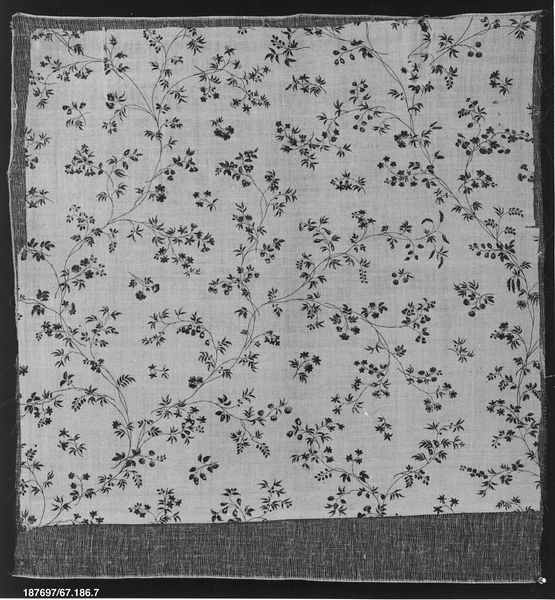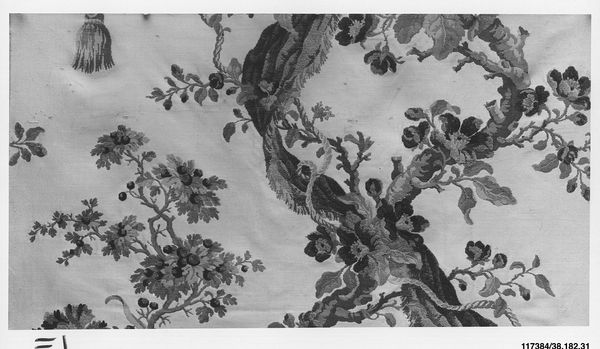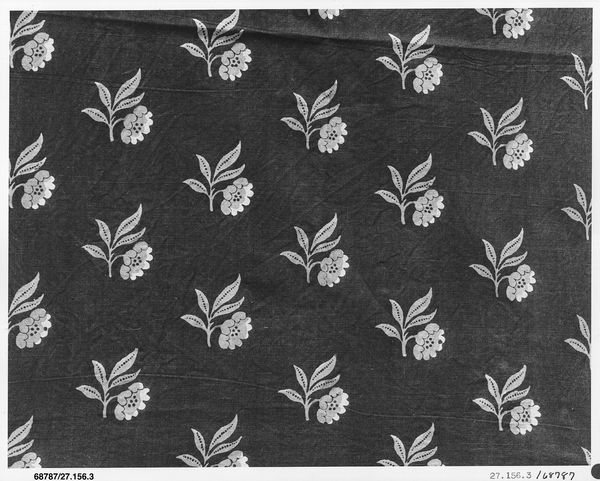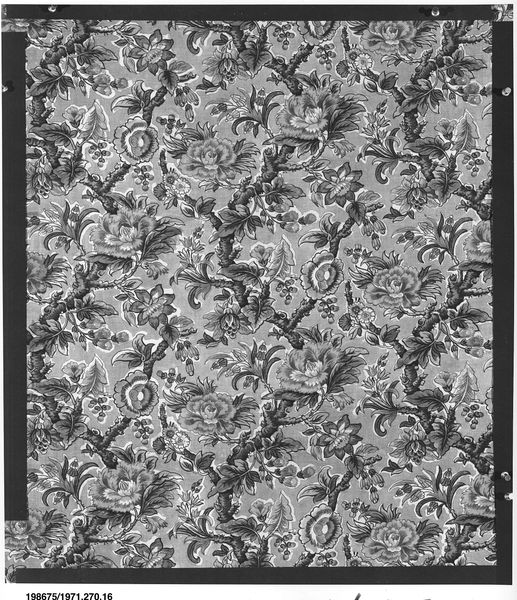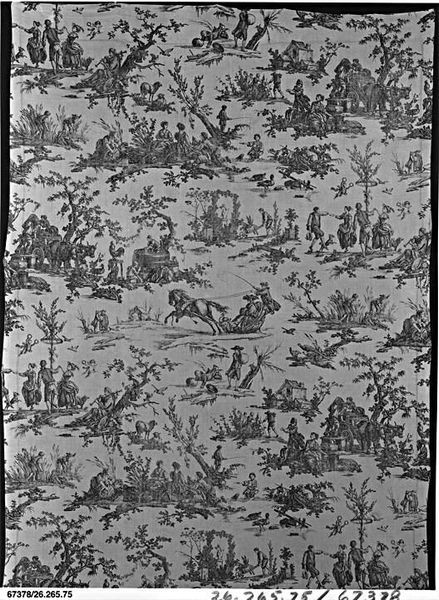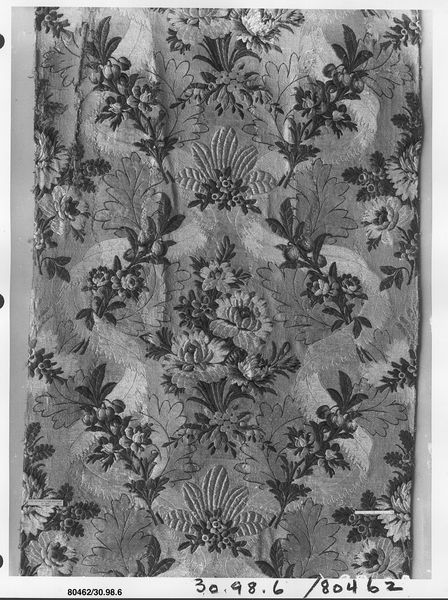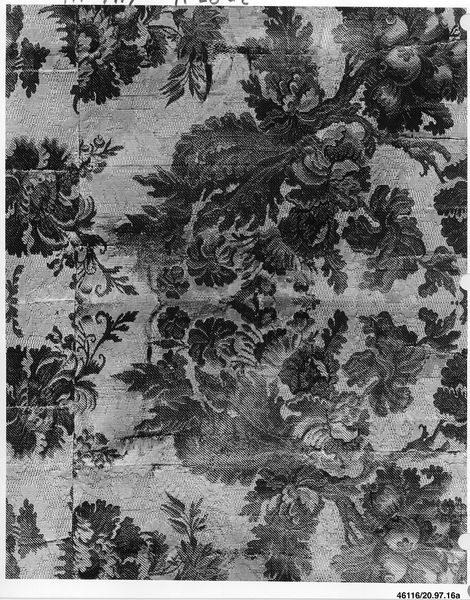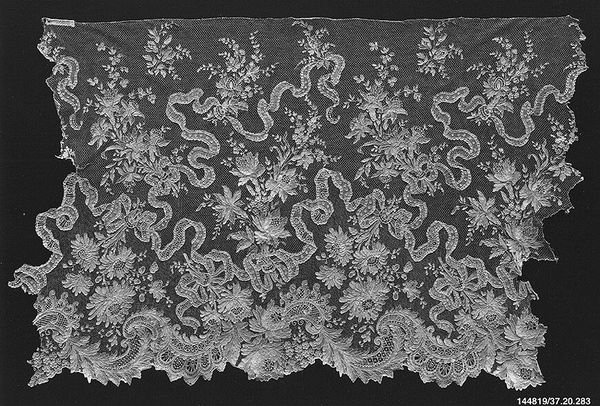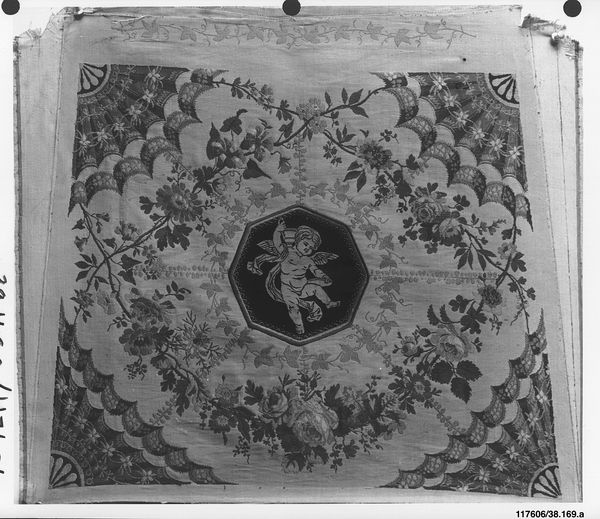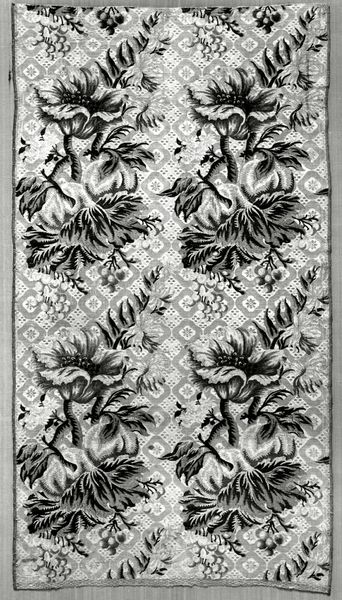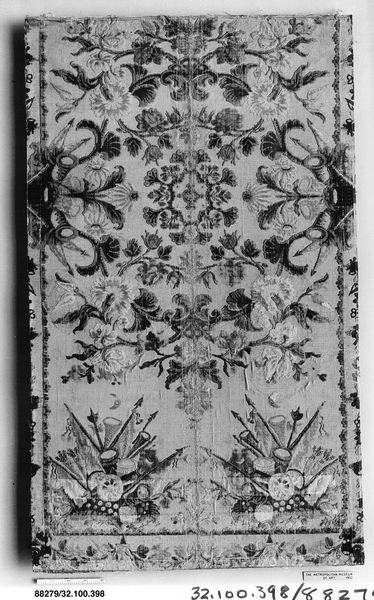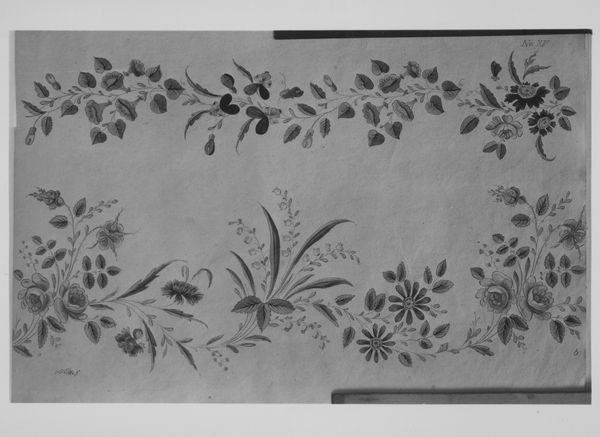
Dimensions: 23 3/4 x 19 x 3 1/2 inches 60.3 x 48.3 x 8.9 cm
Copyright: Public Domain
Editor: This is a textile sample book, dating from between 1845 and 1860, currently held at the Metropolitan Museum of Art. It's intricate; I'm immediately struck by the repeating floral pattern. What can you tell me about the cultural context surrounding its creation? Curator: The mid-19th century saw a rise in industrial production, especially textiles. Pattern books like these played a crucial role. They weren’t just about aesthetics, but served as powerful marketing tools. Do you think the chosen patterns reflect something about the era? Editor: I suppose the floral patterns seem quite romantic. I’m curious if it's influenced by anything specific or more of a reflection of general taste. Curator: Exactly. Consider the growing middle class and their aspirations. The floral patterns reference nature and luxury. The textile production also benefitted greatly from Colonial trade routes, in what ways might colonialism have shaped what gets produced? Editor: Hmm, so these floral patterns may point to an imagined, idealized version of the world accessible to this growing middle class but also funded through exploitation. So the pattern is essentially advertising stability through industry? Curator: Precisely. The museum displaying it now, further complicates the image as an emblem of beauty instead of utility or colonial undertones. How does its display today change the historical implications of it? Editor: I see, it's easy to detach it from those connections if presented solely for aesthetic pleasure. Thank you, I'll definitely be thinking about those tensions. Curator: It’s crucial to analyze how institutional frameworks transform art's narrative. That changes everything.
Comments
No comments
Be the first to comment and join the conversation on the ultimate creative platform.
